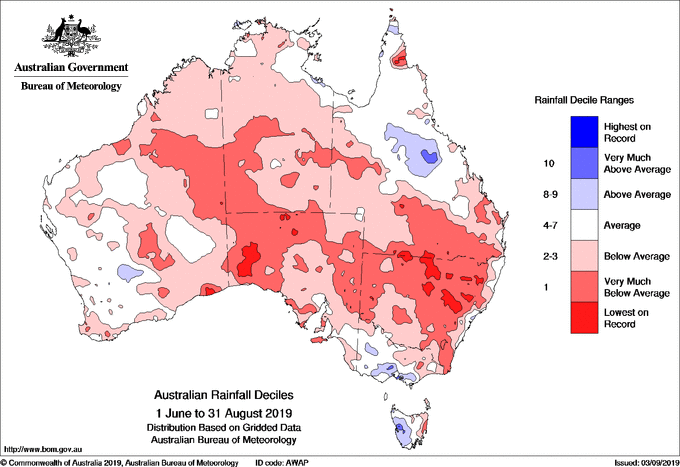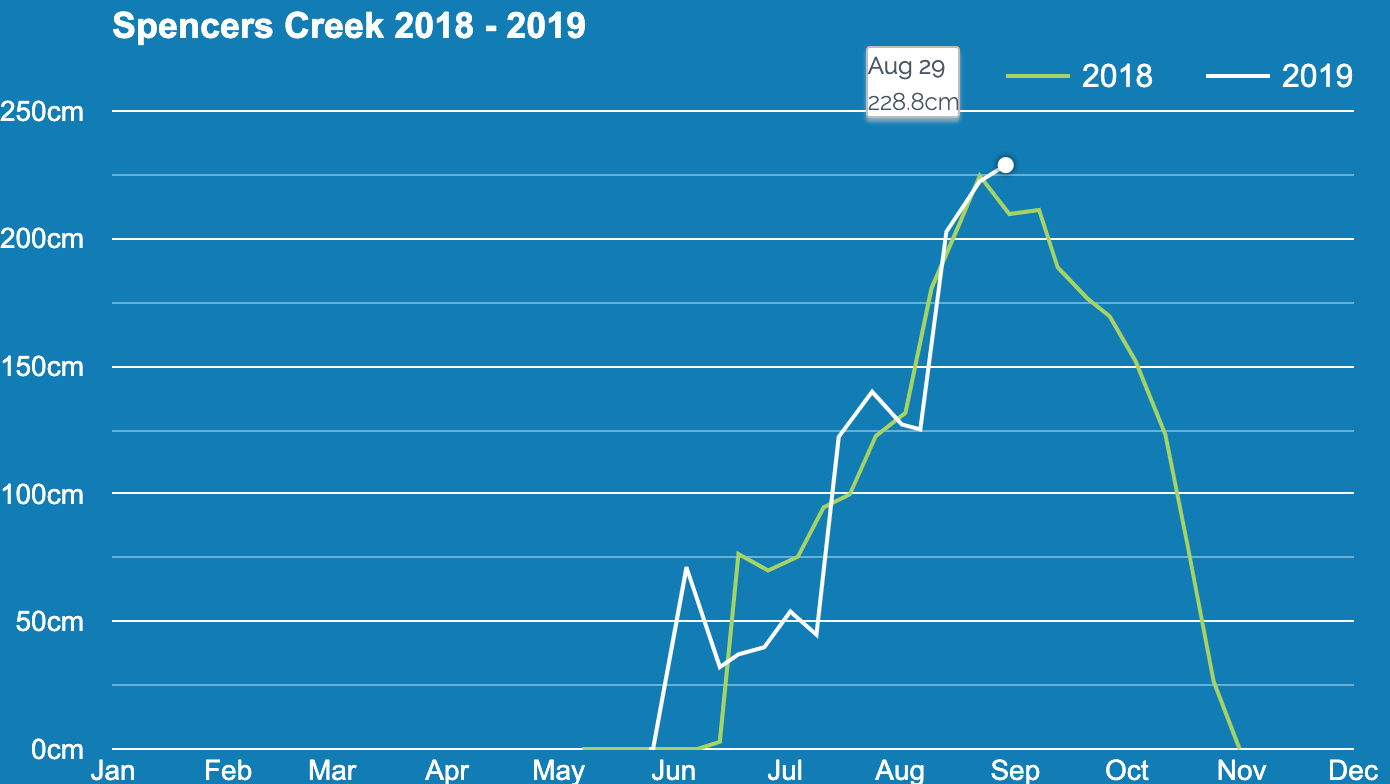Warm, dry winter spilling into spring

Australia's sixth warmest and ninth driest winter on record is likely to be followed by above average temperatures and below average rain this spring.
Australia as a whole had its ninth driest winter in 120 years of records. Rainfall was below average in every state and territory except for Tasmania, while NSW, SA and the NT all registered one of their 10 driest winters on record.

Image: Rain deciles during winter 2019. Source: Bureau of Meteorology
While there were a handful of decent wintry storms in southern Australia, maximum temperatures between June and August were more than one degree above average for the country as a whole. This was Australia's sixth warmest winter on record based on daytime heat.

Image: Maximum temperautre deciles during winter 2019. Source: Bureau of Meteorology
In contrast to the daytime warmth, overnight temperatures were below average in some parts of the country thanks to a combination of cold air, clear skies and low rainfall.

Image: Minimum temperautre deciles during winter 2019. Source: Bureau of Meteorology
Alpine ski resorts fared well this winter, with three large dumps of snow between late May and August and relatively little snowmelt in between. This was the first year on record to see the weekly snow depth at Spencers Creek increase by more than 70cm on three separate occasions.

Image: Weekly snow depths at Spencers Creek, NSW during 2018 and 2019. Source: Snowy Hydro.
The relatively dry winter also took a toll on water storages around the country. At the beginning of September, water storage levels in every state and territory were lower than they were the same time in 2018.